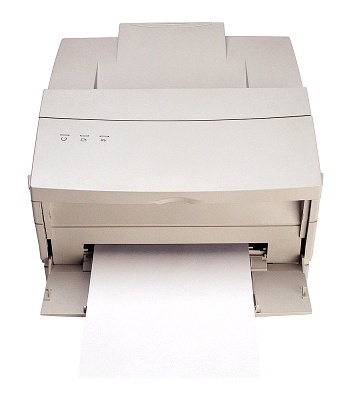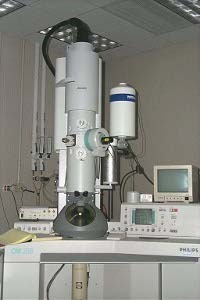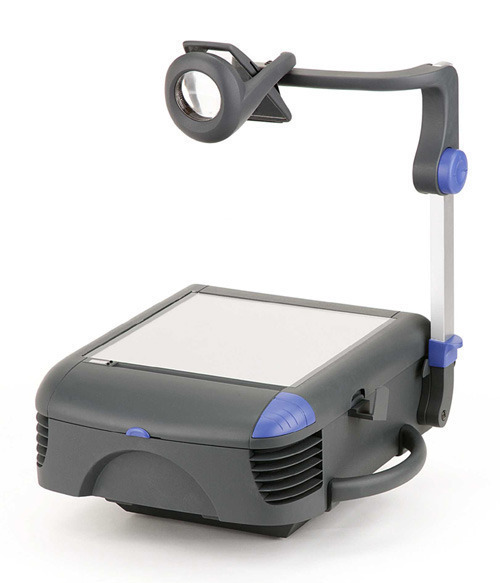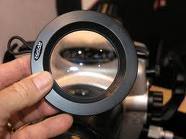A laser printer unlike an inkjet printer uses a laser light beam for printing operations. It is also distinct from other printers because of its exceptional printing speed as well as highly accurate rendering. It utilizes a xerographic (a process of creating an image by the action of light on a specifically coated charged plate) printing.
Some laser printers in the market can print a hundred colored pages and two hundred non-colored pages every minute.
Resolution is a key characteristic of laser printer, measured in dots per inch (dpi). The offered resolutions range from minimum 300 dpi to a maximum of 1,200 dpi. Some laser printers attain higher resolutions with an exceptional technique usually recognized as resolution enhancement.
Components of a Laser Printer
A basic laser printer assembly has six key components.
- Image processor with its own memory: This image processor is programmed to convert text data into raster images (a horizontal stripe of dots across the page is called as a raster line) which are then stored in the raster memory, ready for processing and printing. This image processor is also known as Raster Image Processor (RIP).
- Charged roller or charged corona wire: A prime charge roller emits an electrostatic charge against the photoreceptor (also known as the photoconductor unit), a spinning photosensitive strap or belt, which handles an electrostatic charge on its surface.
- Photosensitive drum (a conveyor-like contraption): It’s cylindrical drum assembly that is built out of extremely photoconductive substance that is discharged by light photons. This is the core component of a laser printer.
- Negatively charged toner: It is used to attract the positive charges on the roller and print the required images.
- Fuser assembly: The printer paper traverses through rollers in the fuser assembly where heat and pressure (up to 200 Celsius) attaches the plastic powder to the paper.
- Laser assembly: It emits a laser beam which travels to the photosensitive drum and helps in reversing the charges.
The Process of Printing
The first step to the printing process is the transmission of the data from the computer or data storage device to the printer's image processor. The image processor rasterizes the data and converts the information received into a graphic image; this image is then sent to the printer's memory in preparation for 'transmission'.
Meanwhile, the photosensitive drum is revolves and touches the charged roller or the charged corona wire. The wire or the roller imparts its negative charge to the drum and as a result the latter acquires a negative static charge. This static charge remains on the drum's surface as long as it's dark.
At this point, the laser assembly emits a light beam onto the revolving photocell. The laser beam passes through a series of focusing mirrors so that it would hit the drum precisely. This laser beam is activated and triggered by the data stored in the image processor memory.
At the points of the drum hit by the laser beam, the charge is reversed from negative to positive (since these areas have been exposed to light, they can no longer keep their negative charges). Through this process, the image is outlined and drawn on the drum by the laser beam; that is, the positively-charged portions of the revolving drum or photocell represent the complete image of the text or picture to be printed.
Now, the drum or the photocell touches the negatively charged toner (fine colored or black, dry powder). This toner clings to all the positively charged portions of the photocell and leaves all the negatively charged portions alone. At this point, the photocell bears the actual image.
Next, the photocell or the drum rolls over the paper and the toner is transferred to the latter. The paper with toner then passes through the fuser assembly which bonds the toner particles to the paper. Through a combination of heat (coming from a heat source within the fuser's tube) and pressure, the toner powder (made of wax or other easy to melt substance) melts on and gets bonded with the paper. The paper then comes out printed.
Maintaining a Laser Printer
The laser printer usually requires maintenance after printing about fifty thousand pages (varies from printer to printer). The distinctive procedure for maintenance is to vacuum the entire assembly, and wash or change the paper managing rollers. The rollers are encompassed into a fat rubber covering, which ultimately deteriorate and is covered with oily paper dirt. They can typically be cleansed with a moisture lint-free cloth or chemical liquids that can assist in restoring the grip of the rubber covering. The fuser heating rollers require oil replacement or refilling after few hundred thousand printed pages. The laser printer as compared to other types of printers is quite expensive with more internal components, hence it requires regular maintenance.




susan.thomas32
=====
breaeyberg
|